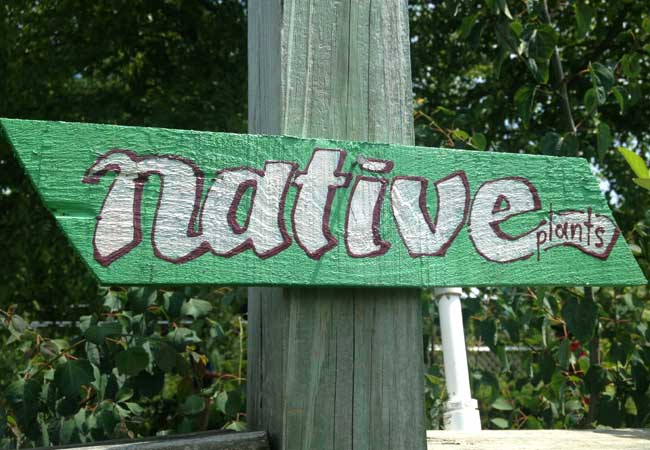
Native Plants
Why choose native plants? Growing native plants offers numerous benefits: They are: (1) adapted to our unpredictable climate, (2) thrive with less maintenance, (3) help protect soil from erosion, (4) support local wildlife, (5) conserve water, and (6) reduce the need for pesticides. Native plants also enhance biodiversity and contribute to a healthier ecosystem.
The Top 10 Native Plants for the Southeastern United States
(all stocked by Stanley's at sometime during the year--call 865-573-9591 for availability)
Black Tupelo (Nyssa sylvatica) - known also as the blackgum or sourgum tree. A lovely ornamental, shade tree, blackgum is also a honey plant and its fruit are eaten by many birds and small animals.
Willow Oak (Quercus phelios) - grows to 50-80 feet tall, a popular shade tree. Do not plant close to your house because it gets very large.
Sweetbay Magnolia (Magnolia virginiana) - an attractive ornamental foliage and flowering tree symbolic of the South popular for is sweet smelling flowers.
American Elderberry (Sambucus nigra ssp. canadensis) - a common shrub/tree that tends to spread itself widely at its base; produces berries in the summer that are edible when cooked, nutritious, and delicious in muffins, pies, preserves, and wine; the bark, leaves, and flowers have medicinal purposes, but can be used with caution because they can be toxic.
Yaupon Holly (Ilex vomitoria) - evergreen, multi-branched shrub or small tree with small, shiny leaves, and a plethora of shiny, red berries; boughs from the holly tree are used often in Christmas decorations. Its name "vomitoria" came from its use by Native Americans to produce a tea that when drunk induced vomiting or was used as a laxative.
Sweet Pepperbush (Clethra alnifolia) - a tall, leafy shrub with upright clusters of fragrant white flowers that bloom from July to September.
Swamp Milkweed (Ascelpias incarnata) - when established this primary host plant for the endangered Monarch butterfly can have deep pink flowers from June to August. This plant was named for Aesculapius, the Greek god of medicine, undoubtedly because it has been used for millennia to treat a variety of ailments.
Trumpet Honeysuckle (Lonicera sempervirens) - known also as coral honeysuckle, this vine produces trumpet-shaped flowers which are red on the outside and yellow within; also produces red berries; this is a plant that attracts hummingbirds.
Climbing Aster (Ampelaster carolinianus) - a sprawling shrub that produces a large quantity of pink flowers in late fall, is the primary caterpillar food plant for the American Painted Lady butterfly and is favored by many types of butterflies.
Narrowleaf Sunflower (Helianthus angustifolius) - also know as the swamp sunflower, has spreading branches that produce daisy-like flowers on its ends; this Eastern wildflower is often sold as a garden plant and is particularly of interest to fall butterflies.